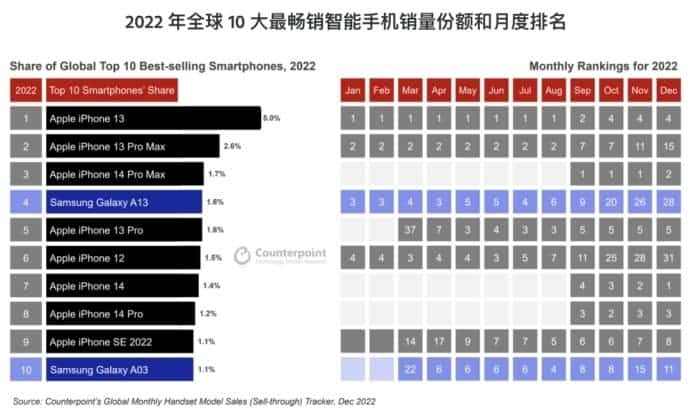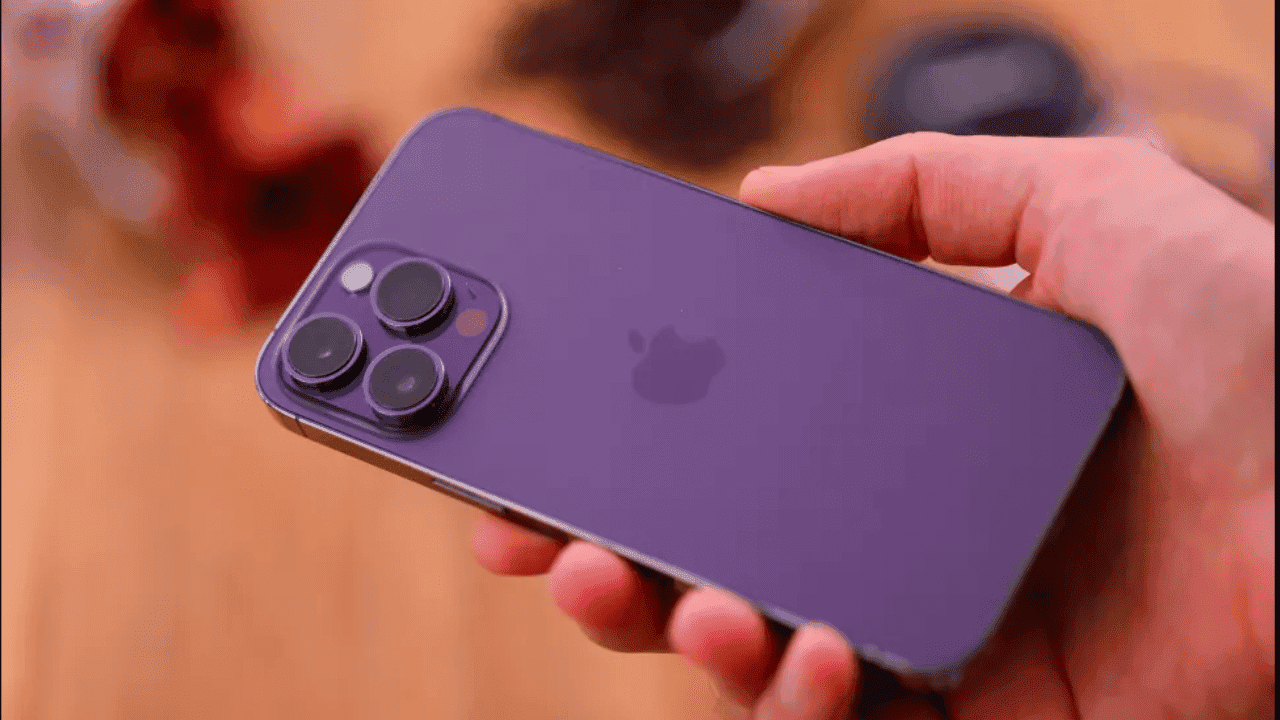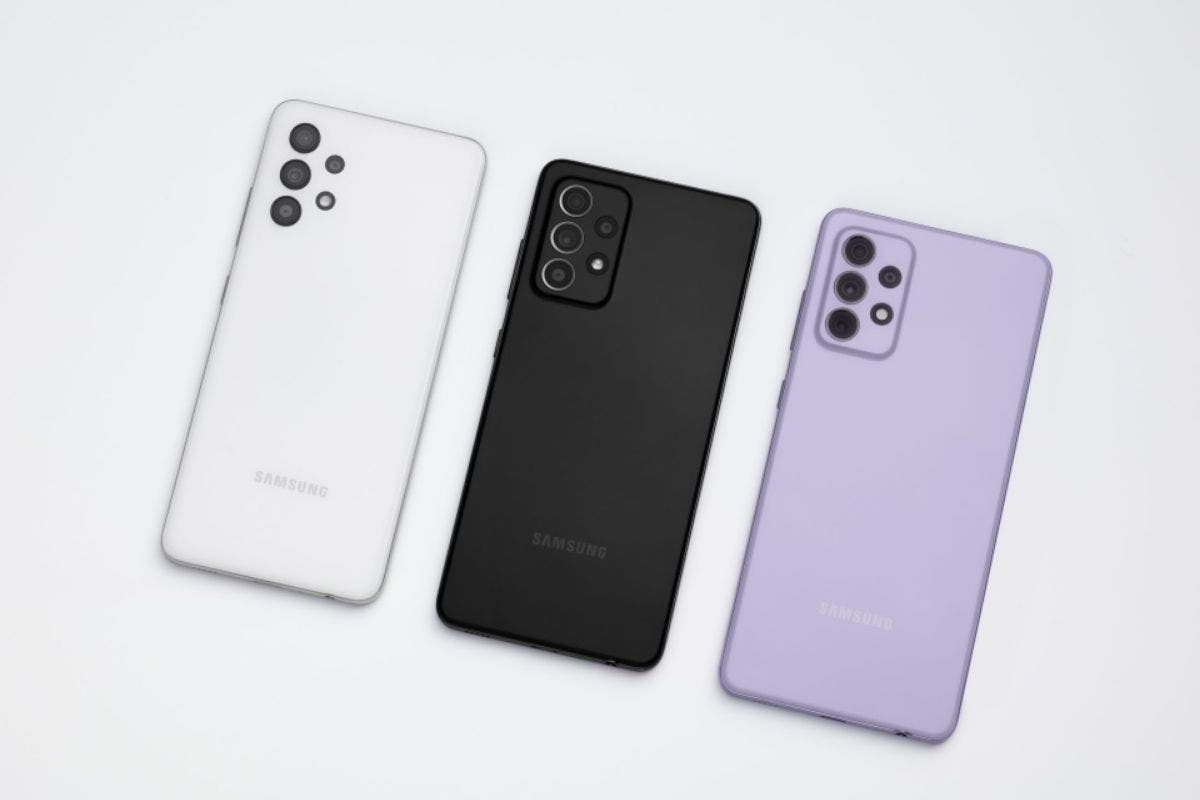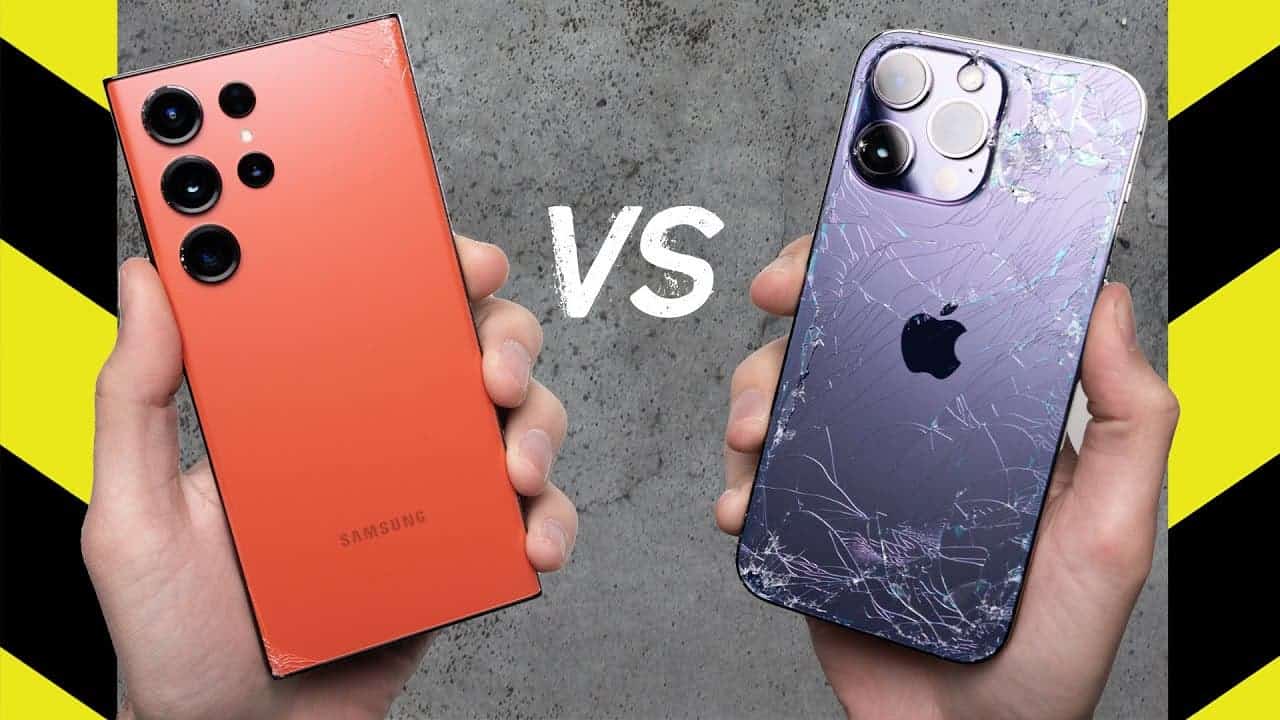The mobile phone market gets a long list of products every year. However, some of these devices sell far better than others. It is important to note that a high-selling device does not mean the phone is better. Since “better” is a relative term, it then depends on the user of the phone. Popular market research firm, CounterPoint Research recently released its global monthly mobile phone model sales tracking report. The report contains the top 10 best-selling mobile phones in the world. However, if you like diversity, you will hate this list. It contains mobile phones from just two brands. What brands are on the list? Your guess is as good as mine, Apple and Samsung.

It is also worth mentioning that among the top 10 best-selling mobile phones in the world for 2022, 8 of these devices are from Apple while only two are from Samsung. We can also see that none of the mobile phones in the list are from China.
Top 10 best-selling mobile phones
- Apple iPhone 13 – 5%
- Apple iPhone 13 Pro Max – 2.6%
- Apple iPhone 14 Pro Max – 1.7%
- Samsung Galaxy A13 – 1.6%
- Apple iPhone 13 Pro – 1.6%
- Apple iPhone 12 – 1.5%
- Apple iPhone 14 – 1.4%
- Apple iPhone 14 Pr0 – 1.2%
- Apple iPhone SE 2022 – 1.1%
- Samsung Galaxy A03 – 1.1%
Apple Phones
The iPhone 13, which alone contributes 28% of iPhone sales—nearly one-third proportion— is the best-selling mobile phone in 2022. In the list of top sellers, the iPhone 14 from last year is in the 7th position. Why the iPhone 14 is not as excellent as the iPhone 13 with respect to sales is a popular topic at the moment.
So, why did the sales of the new mobile phone, the iPhone 14, which was launched last year, fall short of those of the previous generation? In actuality, the iPhone 14 series’ sales success was far weaker than the iPhone 13’s at the time of its initial release. According to its sales data, the first three days of sales for the iPhone 14 series saw 987,000 units sold. This is 11% less than the first three days for the iPhone 13 series.
Why did the iPhone 13 sell better than the iPhone 14?
According to its sales data, the first three days of sales for the iPhone 14 series saw 987,000 units sold. This is 11% less than the first three days for the iPhone 13 series. With regard to this explanation, it is important to note that the iPhone 14 was not highly anticipated. While a few people waited for the smart island feature, that was it. Nothing much. In simple terms, the iPhone 14 did not really improve much over the iPhone 13. We can observe this mostly in the base models. Due to this low upgrade, many people did not anticipate this device. This is probably the reason for its early poor sales.

Poor upgrade
Even in the Pro models, apart from the better chips and smart island feature, nothing much. The performance upgrade is relatively small. The biggest change is probably the appearance of the smart island and this is not enough for many people.
Another important tidbit is that the iPhone 13 had a wave of price cuts before the launch of the iPhone 14 series. Consumers will inevitably choose the iPhone 13 because the iPhone 14 series has no benefits from a cost perspective.
Simply put, Apple didn’t give the iPhone 14 series any thought. It is clear from the Double Eleven event (Chinese 11/11 sales) that Apple is worried about sales. The huge price cuts show this because we don’t often see Apple cut prices, especially for new devices.
Looking back at the top-selling mobile phone list globally over the past few years, it seems that Chinese models have performed pretty poorly. In contrast to Apple’s struggle, it holds more than half of the top ten positions from year to year.
Really, it is hard to explain one scenario with Apple. Everyone critiques Apple for its lack of creativity and sincerity every time it produces a new phone. However, this same device ends up at the top list year after year. This is mostly so in terms of sales while Chinese brands that add “everything” still lag behind. The market may just be missing Huawei. Yet if you give it some thought, Apple really excels in areas like core technology and product ecology—areas where Chinese brands fall short.
Samsung Phones
Samsung is no push away in the mobile phone market. The company is one of the largest mobile phone brands in the world. However, in recent years, the South Korean manufacturing giant has been struggling with its sales strategy. We can see that in terms of sales, none of its flagship phones did a very good job. The two Samsung mobile phones on the list are entry-level devices that sell for less than $150.

While Apple fanboys are willing to ditch $1000 for whatever Apple sells, Samsung fanboys are not the same. They probe whatever Samsung releases and if it’s not worth the price, they choose other Android, probably cheaper, alternatives.
However, as of 2021, Samsung remained one of the world’s largest mobile phone brands. According to Statista, the company sold around 256 million units in 2021. Samsung was the world’s largest mobile phone vendor in terms of market share in Q1 2021, with a 21.8% share of the market. The company’s flagship Galaxy series of smartphones, which includes models such as the Galaxy S and Galaxy Note, have been popular with consumers for their advanced features and sleek designs.
In recent years, Samsung has faced increased competition from other smartphone manufacturers, particularly from Chinese brands such as Huawei, Xiaomi, and Oppo. However, Samsung has continued to innovate and release new models with cutting-edge features, such as foldable screens and 5G connectivity, to stay competitive in the market.






